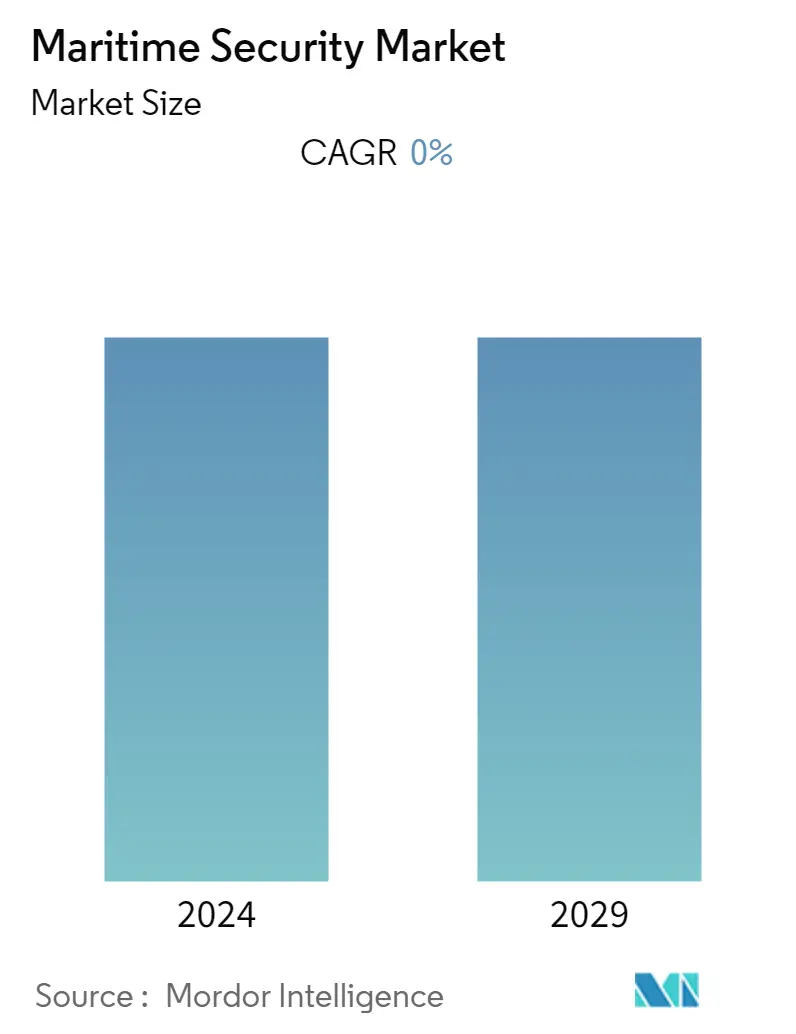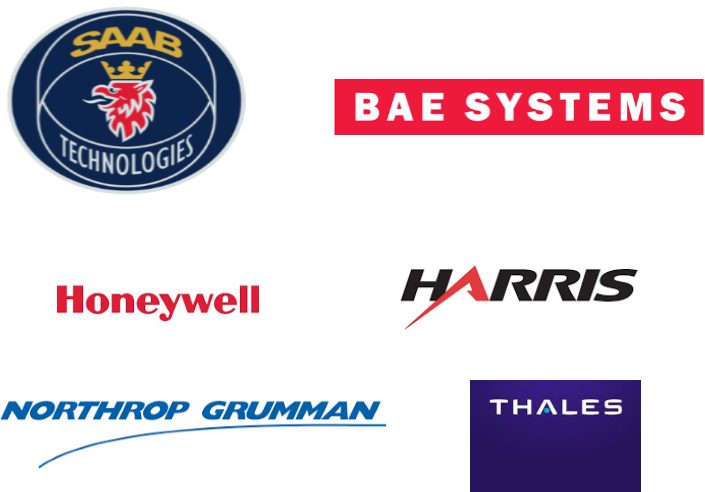Market Size of Maritime Security Industry

| Study Period | 2019 - 2029 |
| Base Year For Estimation | 2023 |
| CAGR | 0.00 % |
| Fastest Growing Market | Asia Pacific |
| Largest Market | North America |
| Market Concentration | High |
Major Players
*Disclaimer: Major Players sorted in no particular order |
Maritime Security Market Analysis
- In response to criminality and violence in the maritime sector, the shipping industry has increasingly relied on several models of maritime security to protect vessels and seafarers. This trend has resulted in a proliferation of weapons at sea, and various types of security measures, operating aboard seafaring ships.
- Maritime terrorism, drug trafficking, gun-running, piracy, and other non-traditional seaborne attacks, increased exponentially in the past decade and threatens many nations today. This state has given rise to a shift towards asymmetric forces, from the use of conventional force-structured defense forces. Maritime security is critical to national, as well as human, safety, and it is also linked to economic development, since it affects sea trade.
- Emerging economies in East Asia are acquiring more purchasing power and a need to secure increasing energy needs. As geopolitical control changed from the Atlantic to the Pacific, policy-makers in the EU sought to pay closer attention to the vast maritime region that lies in between the Indian Ocean. All significant sea-powers rely on the so-called Great Connector, that stretches from the Cape of Good Hope to the Strait of Malacca.
- According to the UNCTAD forecasts, in the Review of Maritime Transport, published in 2018, world seaborne trade increased in 2017, reaching 10.7 billion tons, reflecting an additional 110 million tons. This is expected to grow further in the current fiscal year.
- Further, there have been reports of links between cyberattacks and physical piracy, in which pirates have reportedly identified ships that carry valuable cargo and minimal onboard security, by infiltrating the systems of shipping companies. This has led to the emergence of developing a sound security system, with services such as a private communication channels, etc.
- The use of drones as surveillance support system is expected to gain a foothold in maritime security, and it can enhance the security with the exposure of threats during nighttime and testing weather conditions.
Maritime Security Industry Segmentation
Maritime security is frequently defined as the protection from threats to the freedom or good order at sea. Issues clustered under the notion of maritime security include crimes such as piracy, armed robbery at sea, trafficking of people and illicit goods, illegal fishing or pollution.
| By Type | ||||||
| Screening and Scanning | ||||||
| Communications | ||||||
| ||||||
| ||||||
| Other Detectors Type |
| By End User | |
| Coast Guard | |
| Military | |
| Other End Users |
| Geography | |
| North America | |
| Europe | |
| Asia Pacific | |
| Latin America | |
| Middle East and Africa |
Maritime Security Market Size Summary
The maritime security market is experiencing significant growth due to the increasing threats of maritime terrorism, drug trafficking, gun-running, and piracy. These non-traditional seaborne attacks have prompted a shift from conventional defense forces to asymmetric security measures, highlighting the critical importance of maritime security for national and human safety, as well as economic development. The rise in criminal activities at sea has led to the proliferation of various security measures, including the use of drones for surveillance and the development of advanced communication systems to enhance onboard security. Emerging economies in East Asia are also contributing to the market's expansion as they seek to secure their growing energy needs amidst shifting geopolitical dynamics.
In North America, the maritime security market is bolstered by the extensive coastline and port infrastructure, with significant advancements in Command, Control, Communications, Computers, Intelligence, Surveillance and Reconnaissance (C4ISR) systems. The integration of security solutions and intelligence sharing among nations has strengthened maritime defense capabilities. The market is highly concentrated, with key players like Northrop Grumman Corporation, BAE Systems Inc., and Honeywell International Inc. leading the way. Recent developments, such as Saab's contract with the Royal Australian Navy and the establishment of a production center in the UAE, underscore the ongoing efforts to enhance regional security and maintain a technological edge in defense and security products.
Maritime Security Market Size - Table of Contents
-
1. MARKET DYNAMICS
-
1.1 Market Overview
-
1.2 Introduction to Market Drivers and Restraints
-
1.3 Market Drivers
-
1.3.1 Increased Seaborne Threats And Ambiguous Maritime Security Policies
-
1.3.2 Increasing Adoption Of Security Technologies In Bric Countries
-
-
1.4 Market Restraints
-
1.4.1 High Risk Rate In Ungoverned Zones
-
1.4.2 Unstructured Security Standards And Technologies
-
-
1.5 Value Chain / Supply Chain Analysis
-
1.6 Industry Attractiveness - Porter's Five Force Analysis
-
1.6.1 Threat of New Entrants
-
1.6.2 Bargaining Power of Buyers/Consumers
-
1.6.3 Bargaining Power of Suppliers
-
1.6.4 Threat of Substitute Products
-
1.6.5 Intensity of Competitive Rivalry
-
-
-
2. MARKET SEGMENTATION
-
2.1 By Type
-
2.1.1 Screening and Scanning
-
2.1.2 Communications
-
2.1.3 Surveillance and Tracking
-
2.1.3.1 Underwater Surveillance
-
2.1.3.2 Video Surveillance
-
2.1.3.3 Radar
-
2.1.3.4 Other Surveillance and Tracking Types
-
-
2.1.4 Detectors
-
2.1.4.1 RFID
-
2.1.4.2 Laser Finders
-
-
2.1.5 Other Detectors Type
-
-
2.2 By End User
-
2.2.1 Coast Guard
-
2.2.2 Military
-
2.2.3 Other End Users
-
-
2.3 Geography
-
2.3.1 North America
-
2.3.2 Europe
-
2.3.3 Asia Pacific
-
2.3.4 Latin America
-
2.3.5 Middle East and Africa
-
-
Maritime Security Market Size FAQs
What is the current Maritime Security Market size?
The Maritime Security Market is projected to register a CAGR of 0% during the forecast period (2024-2029)
Who are the key players in Maritime Security Market?
Saab AB, Northrop Grumman Corporation, BAE Systems Inc., Honeywell International Inc. and Kongsberg Gruppen are the major companies operating in the Maritime Security Market.

